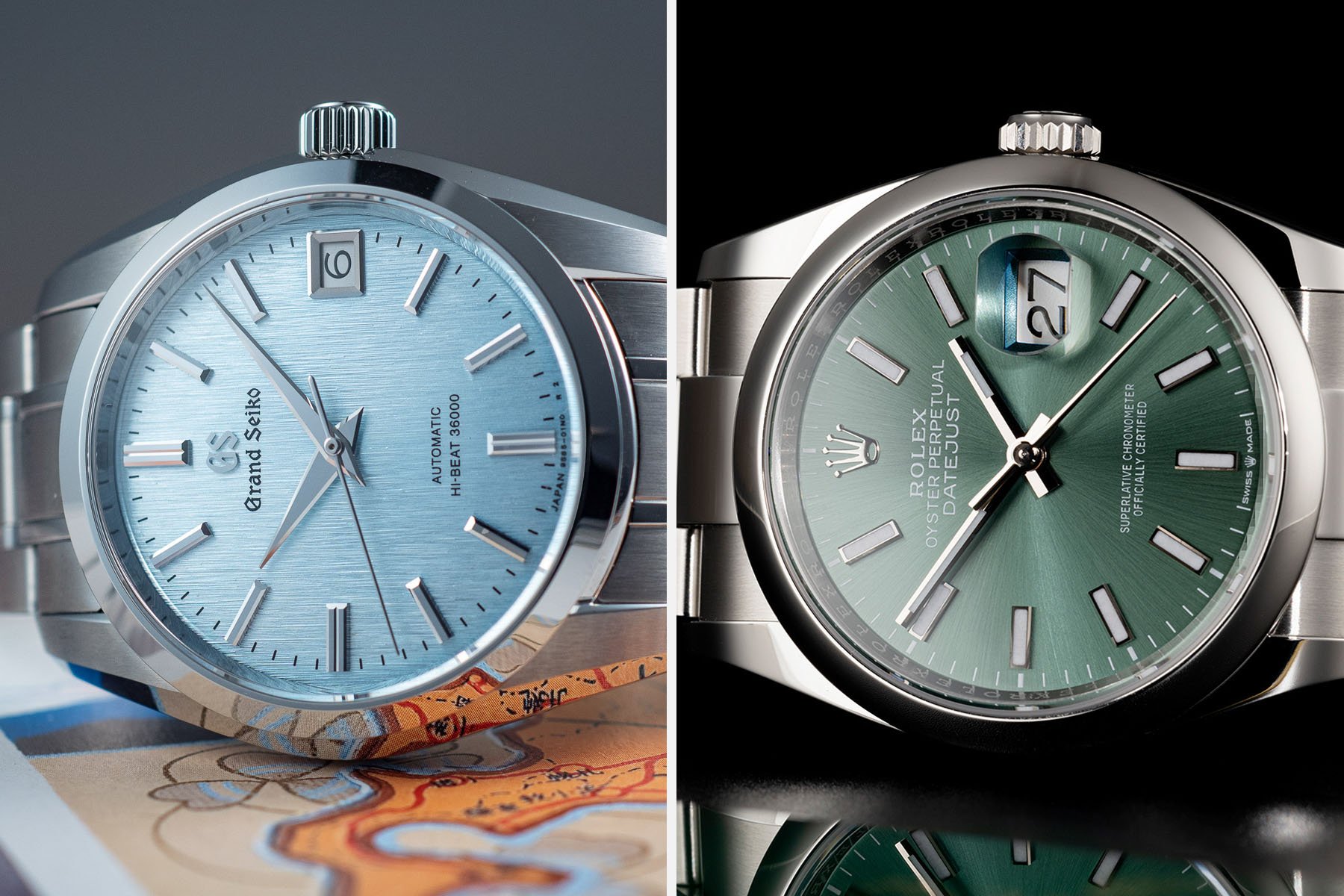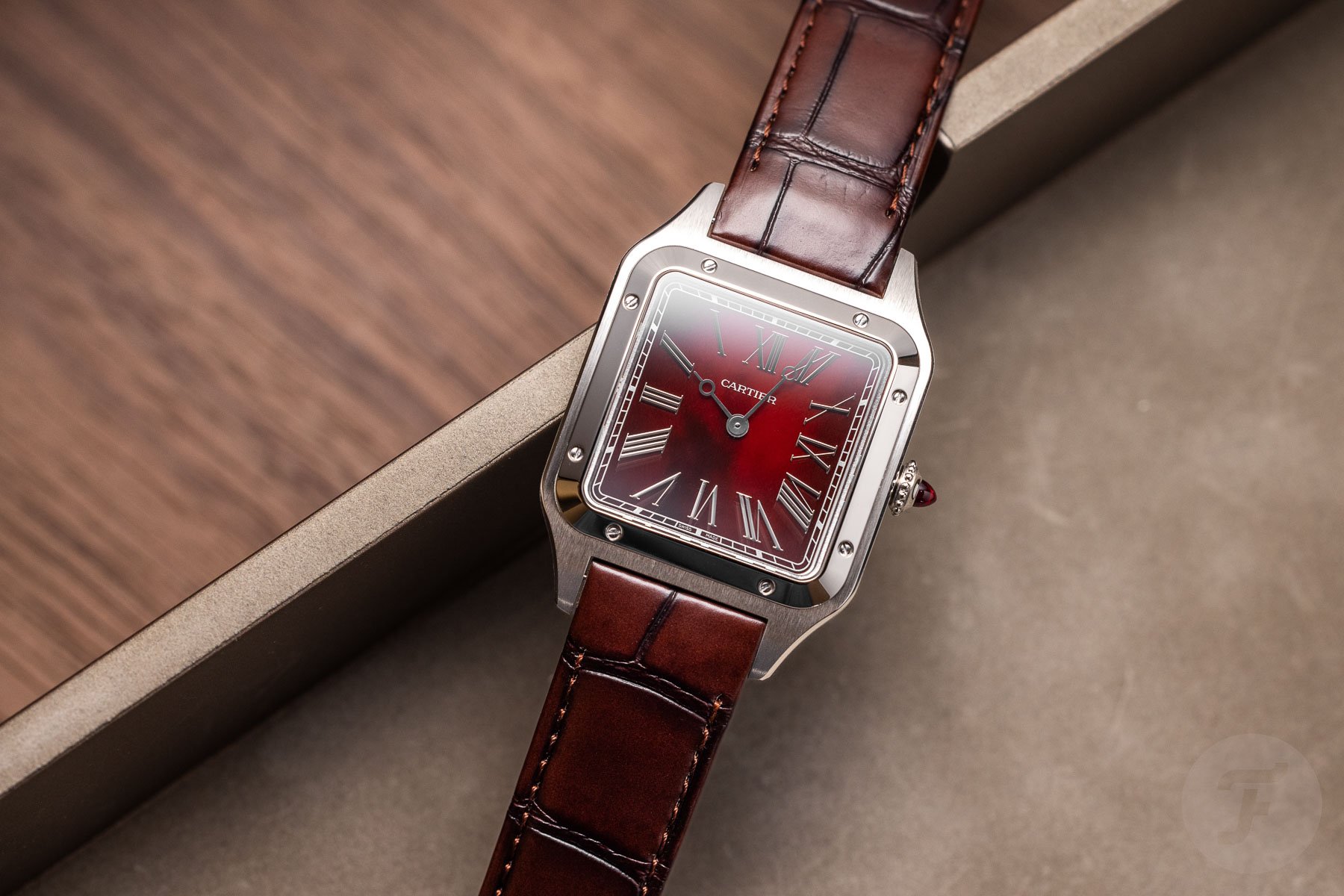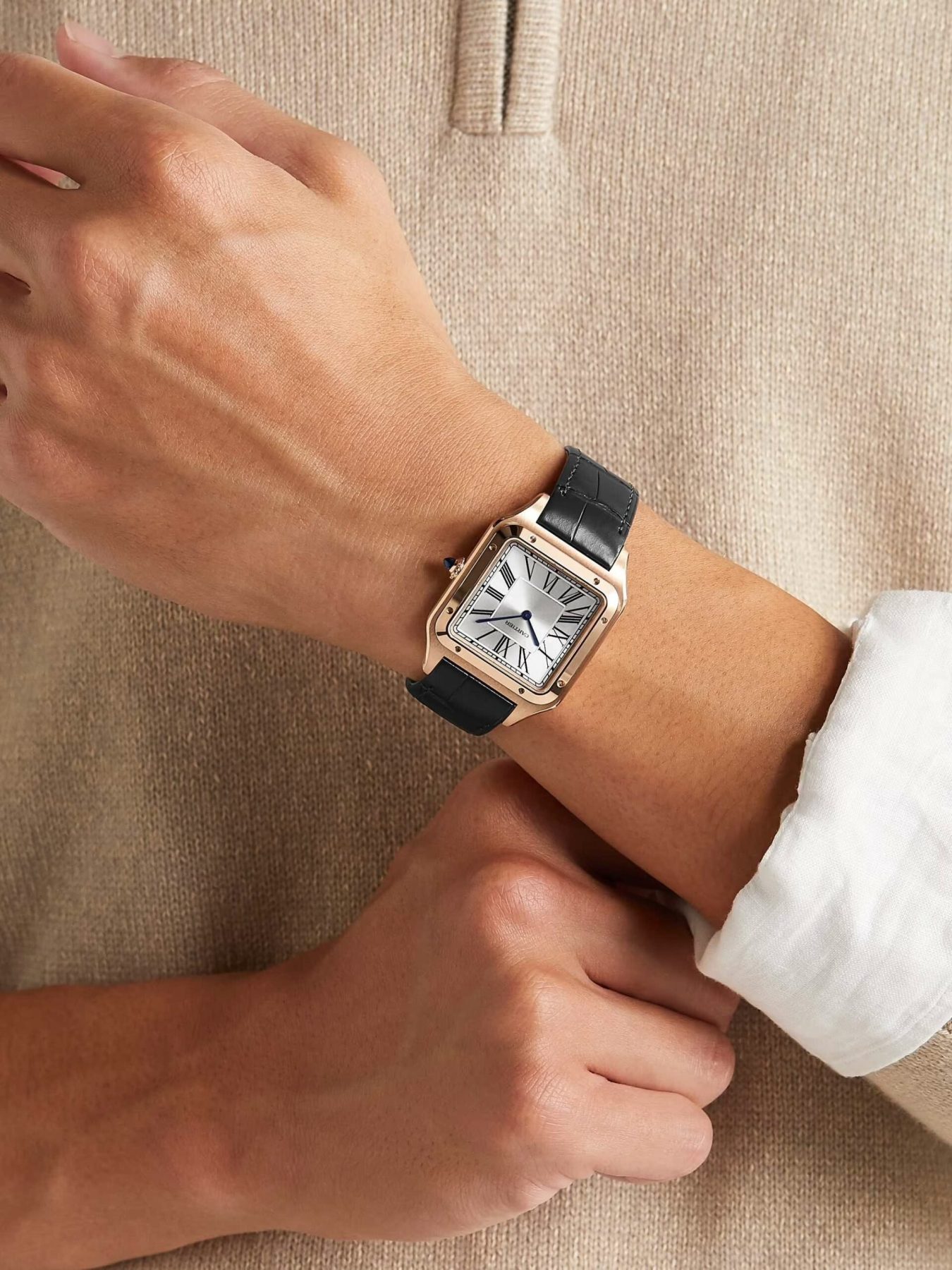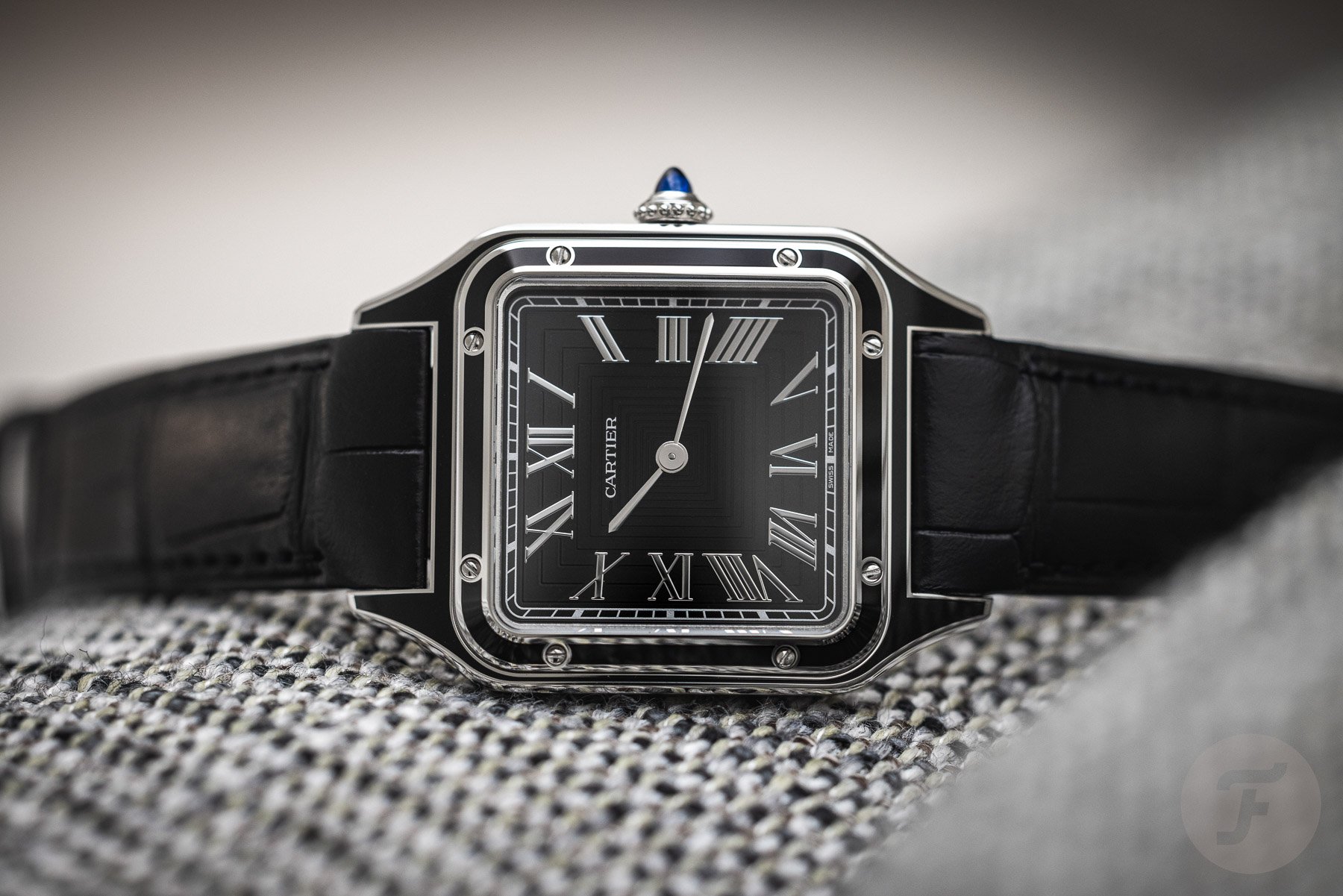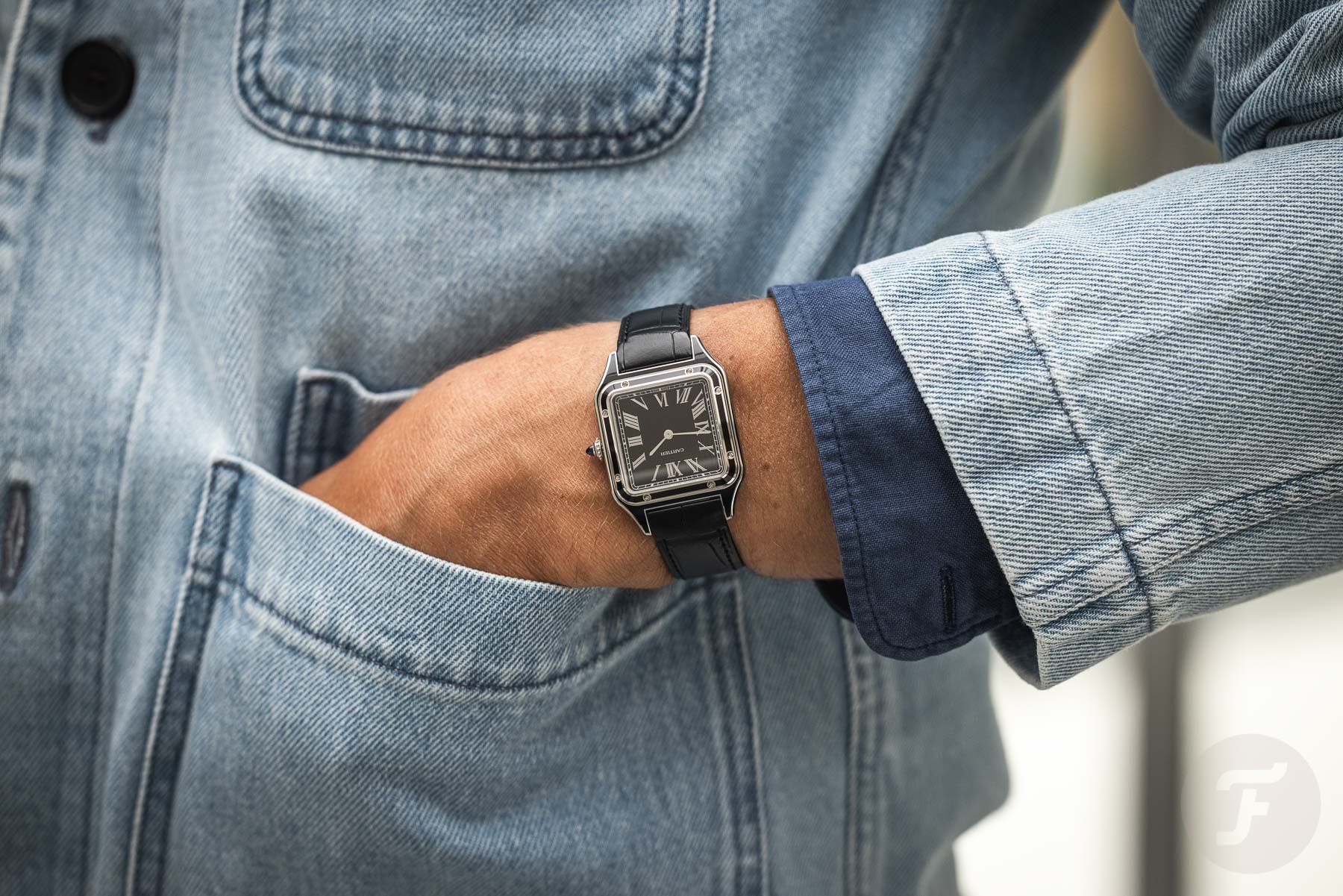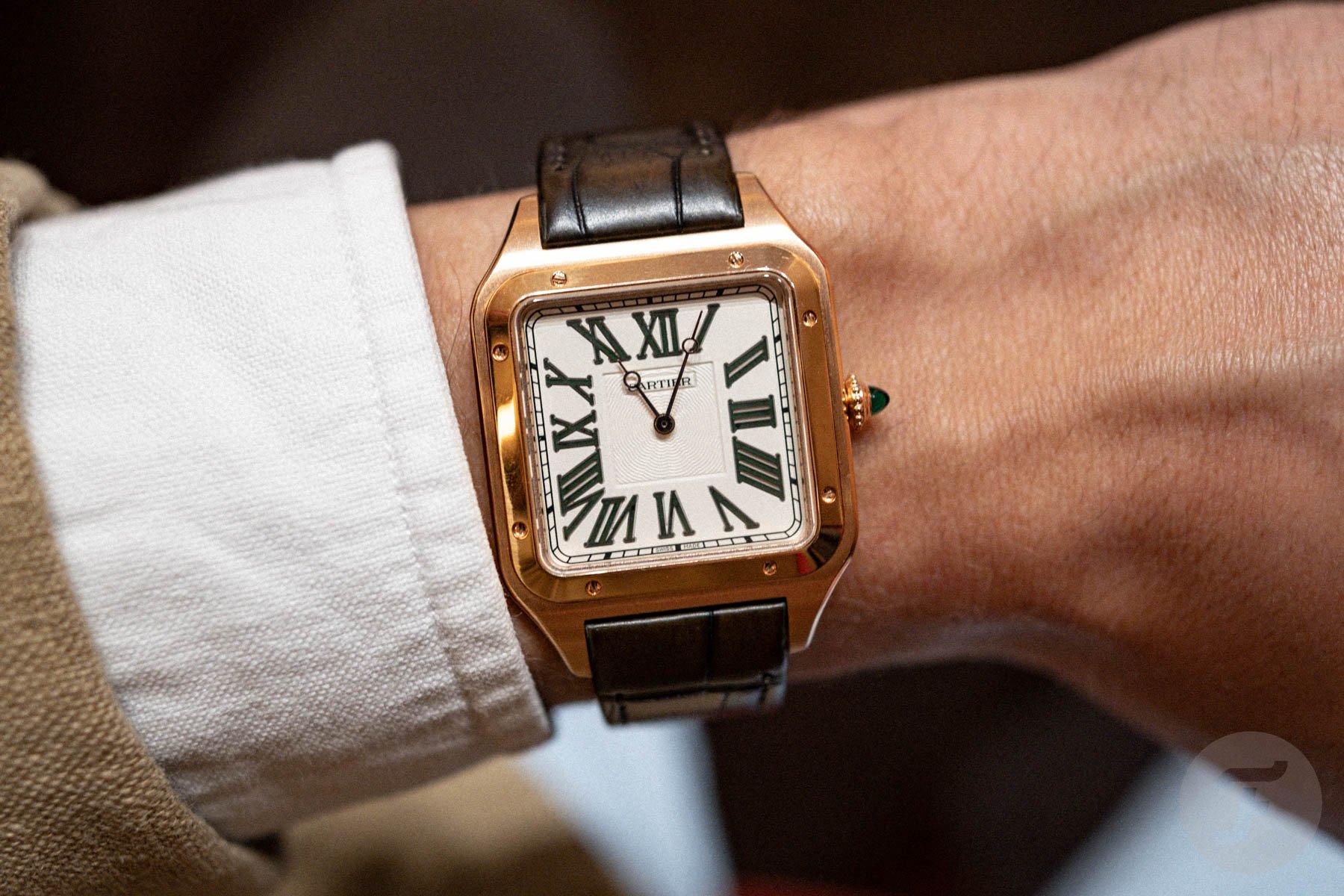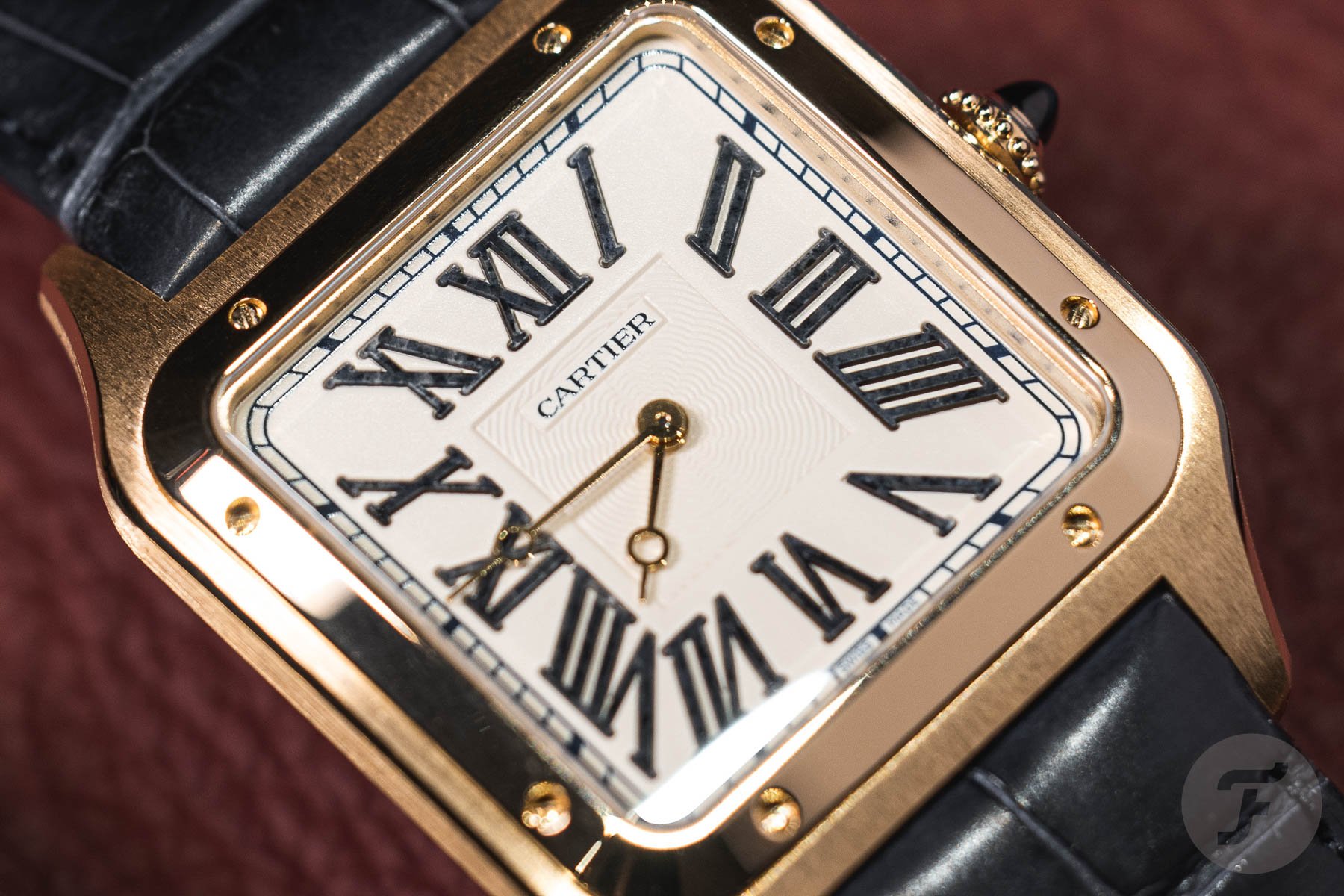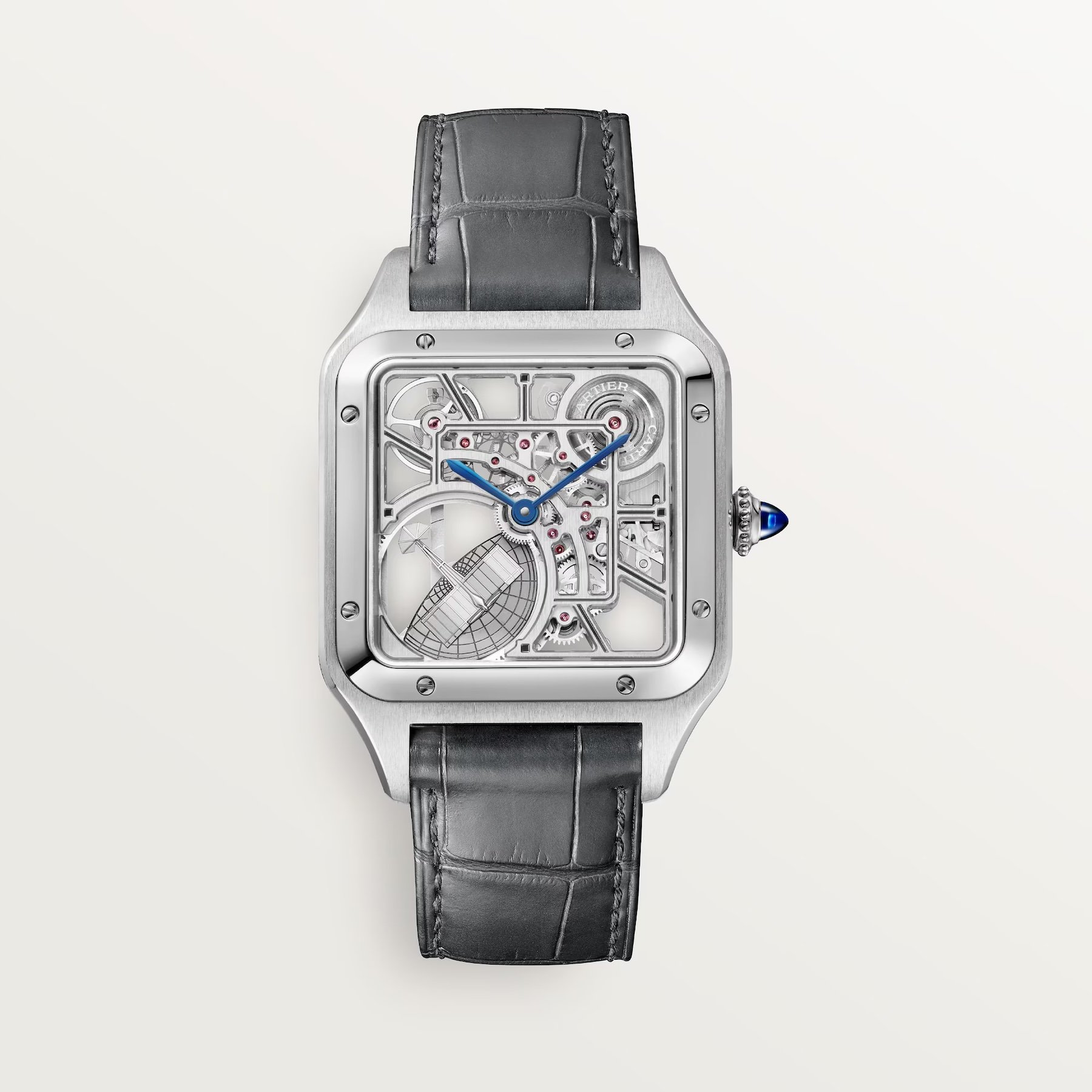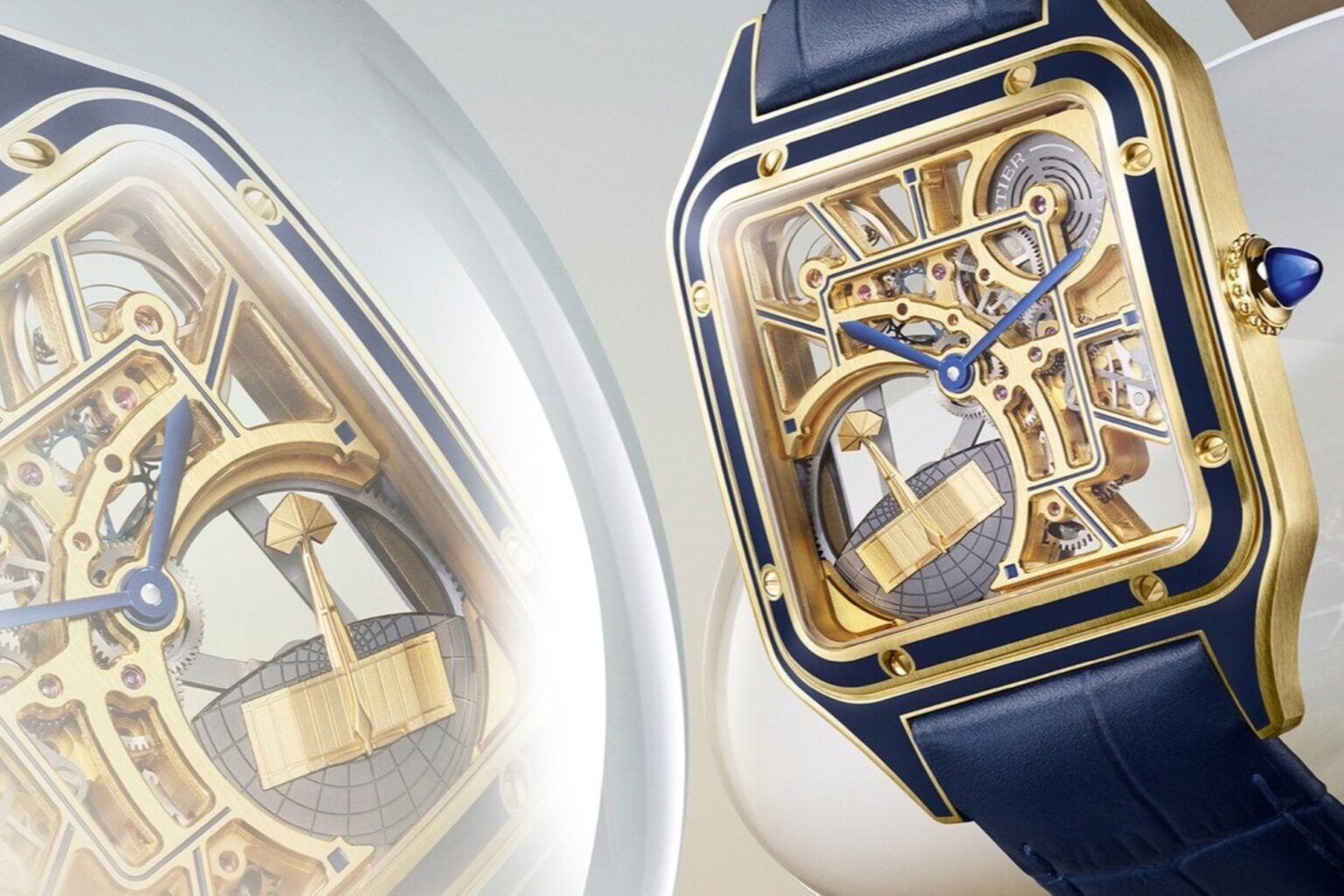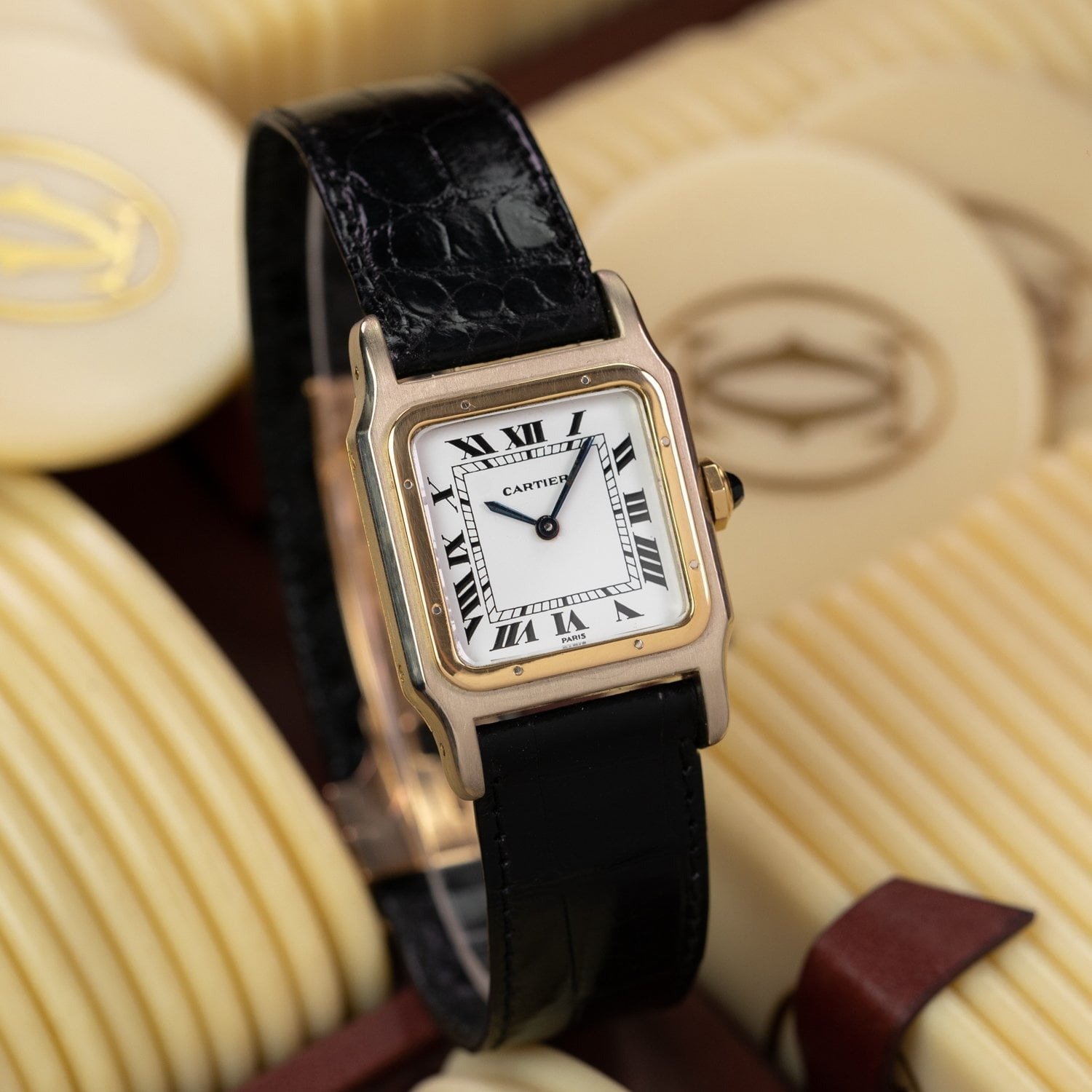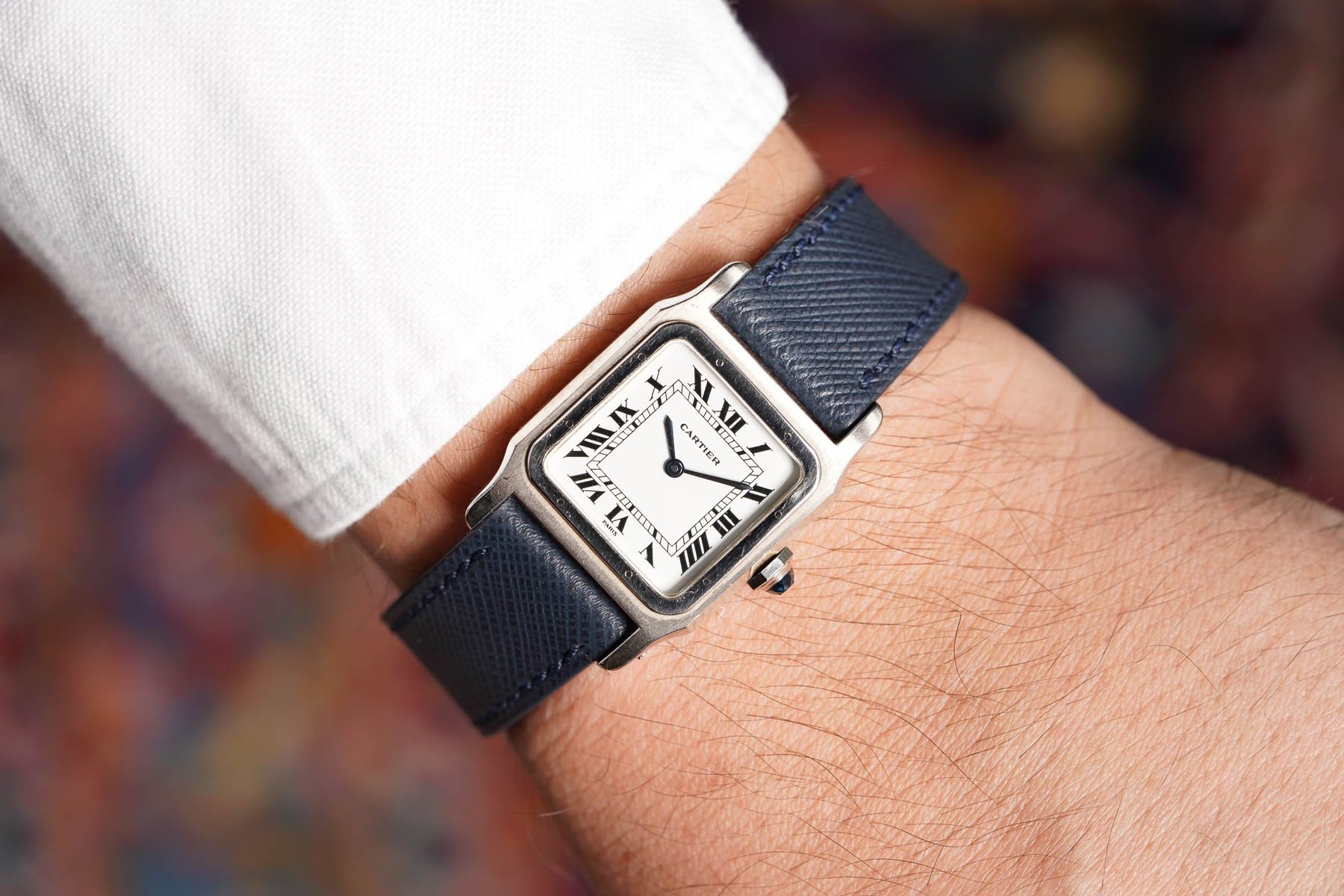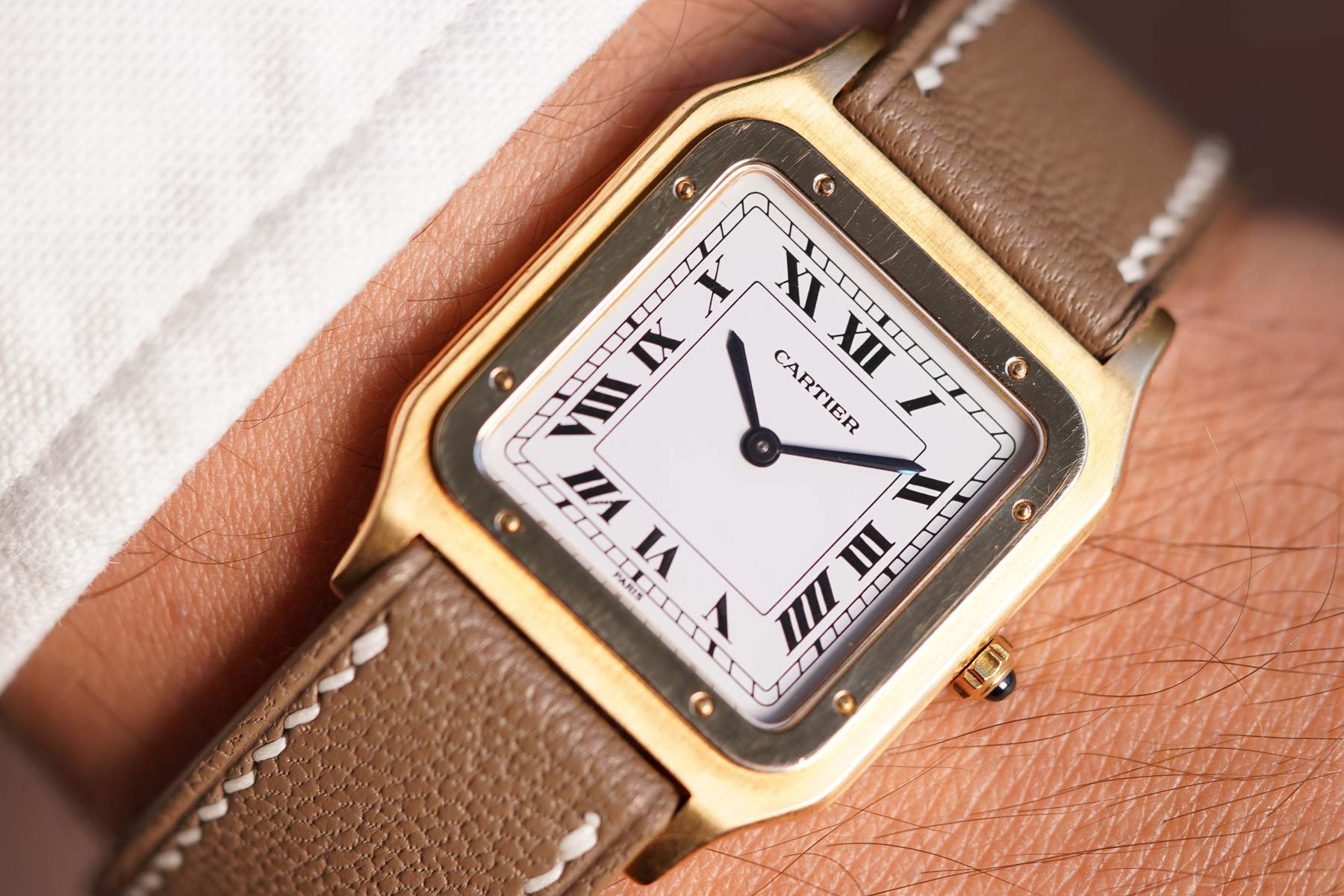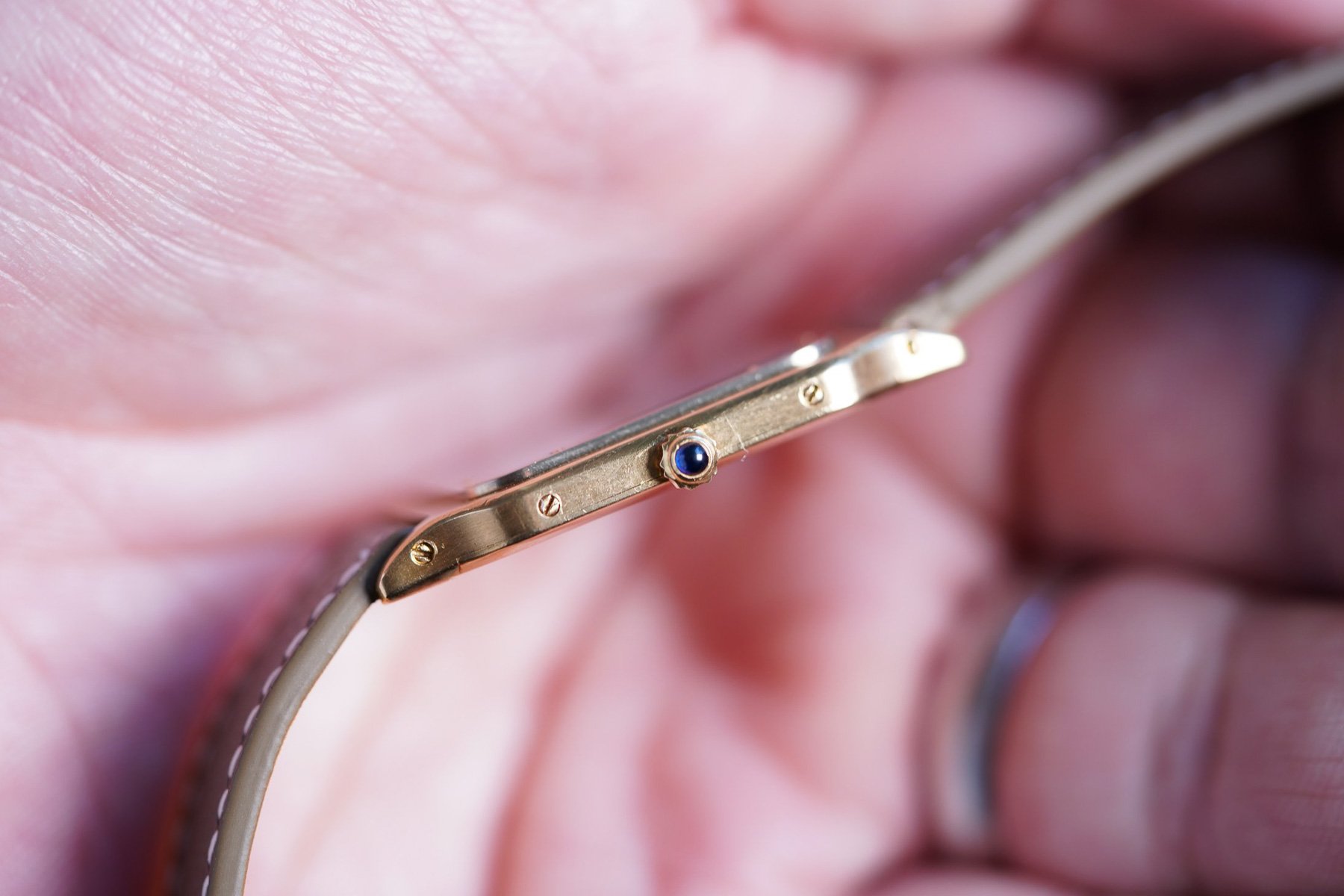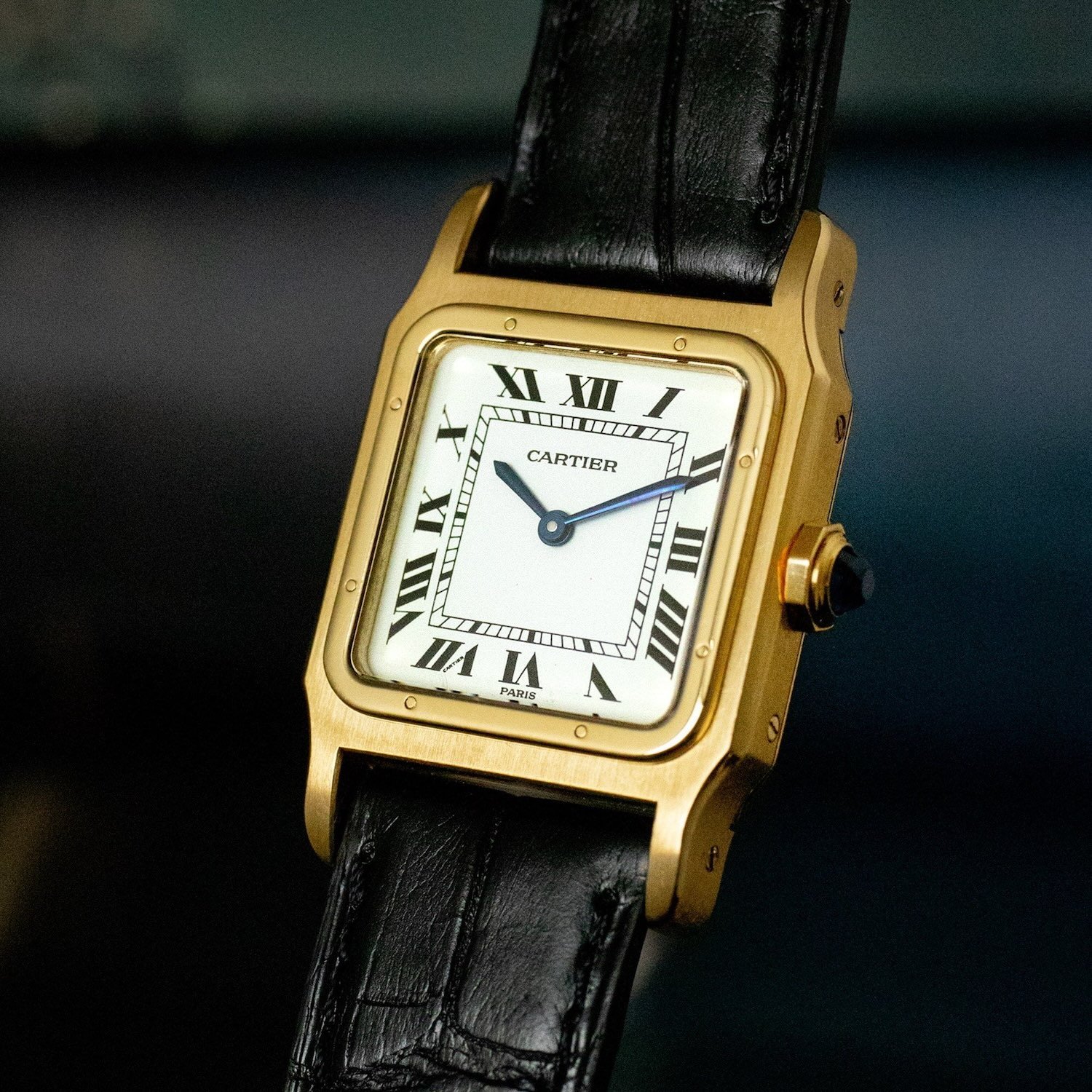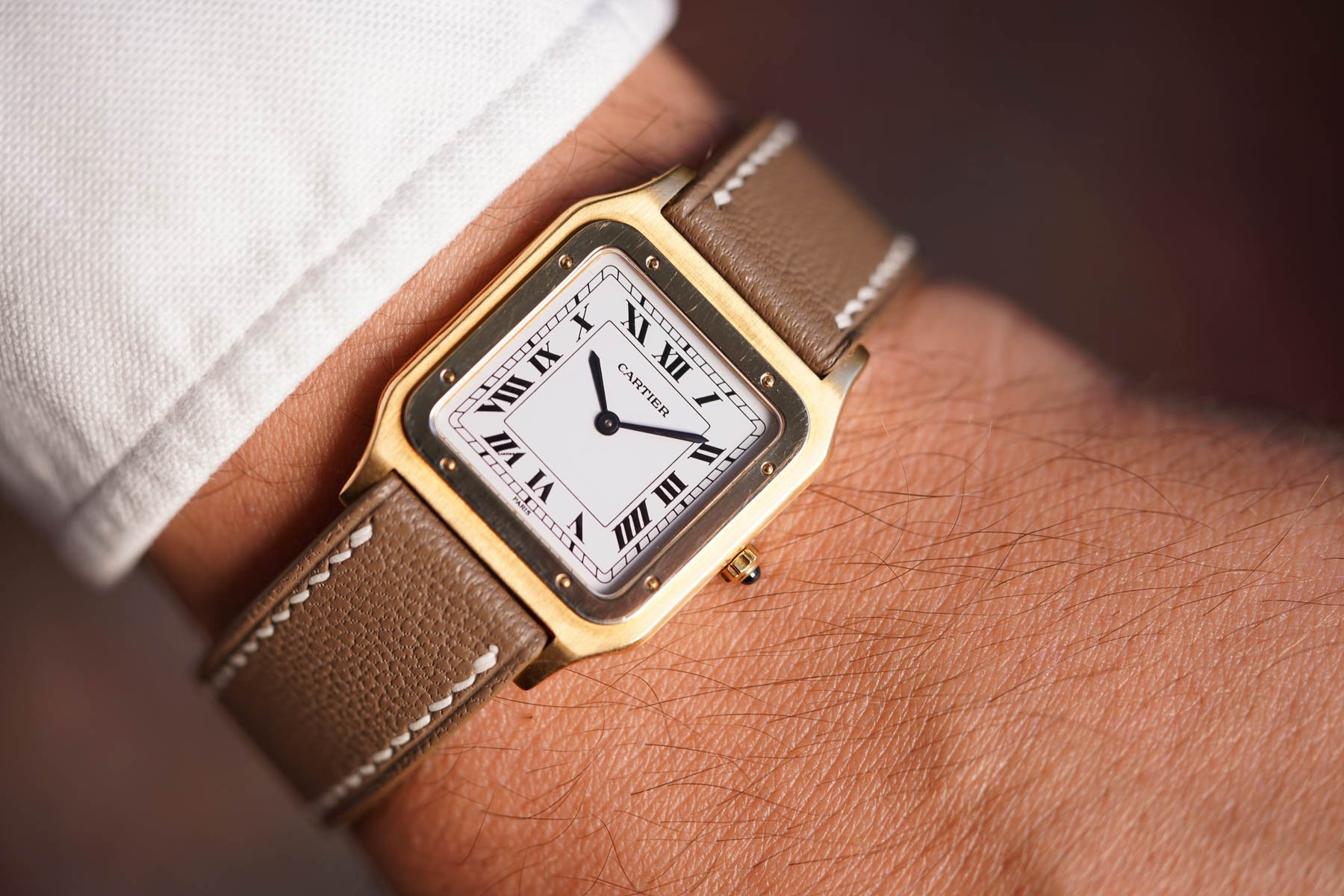Sunday Morning Showdown: The Cartier Santos-Dumont — Current Vs. Vintage
The Cartier Santos-Dumont was one of the first wristwatches ever made. Louis Cartier designed it at the request of his friend, the Brazilian pilot Alberto Santos-Dumont. He was looking for a watch he could read while flying. The Cartier Santos(-Dumont), with its signature square shape and quirky screws, is now a true icon. The Santos-Dumont is the dressier option next to the “regular” Cartier Santos, which often comes in bigger sizes and on an all-steel or full-gold bracelet. In today’s Sunday Morning Showdown, we’ll put the current variations of the Santos-Dumont up against the vintage ones to see which you prefer.
Mike will defend the vintage Cartier Santos-Dumont, and Daan will fight for the current versions. But before we get into this week’s battle, let’s recap last week’s.
Last week, on Sunday Morning Showdown…
Surprisingly, seven days later, last week’s Sunday Morning Showdown score is almost 50-50. We didn’t expect this when we put the current 36mm Rolex Datejust ref. 126200 up against the 37mm Grand Seiko SBGH347. Sure, we thought the Grand Seiko could be a formidable opponent. But when Rolex is in the game, it’s in it to win it and usually does. Well, not this time because the Datejust only managed to earn 49% of the votes.
The 150+ comments show many people have an opinion on these two watches. Of course, there were some Rolex haters, but there were also some people who appreciated the craftsmanship of the Grand Seiko. Then again, Rolex is the better-known brand, and the Datejust is seen as a proper do-it-all watch. As you can see, it’s difficult to draw any clear conclusions. However, it’s nice to see Grand Seiko is finally capable of giving Rolex a hard time on these showdowns. All right, let’s get to today’s Cartier Santos-Dumont battle.
Daan: The current Cartier Santos-Dumont
Before I started writing my part for this article, I checked the Cartier Santos-Dumont offerings on Chrono24. It’s a nice way to get a feel for which older references are out there and see them next to the more recent iterations. To be honest, after I did that, I could easily vote either way on this battle. Both the vintage and current references have that typical, effortless Cartier swagger. But what’s also striking is that there’s quite a difference between the characters of the older references and the newer ones.
In general, the earlier references look a bit more toned down. They often have a case and bezel made of the same material. In addition, there aren’t that many dial variations. Most of the examples you’ll find have Cartier’s classic white dial with small black Roman numerals. There’s absolutely nothing wrong with these older references. Also, in terms of price, they might be the more sensible options here. But when you look at the newer references, there’s undoubtedly much more to choose from.
Pointier and more elegant
Let me take my favorite Cartier Santos-Dumont from last year as an example. I’ll dub it the “Black Beauty” as it has a steel case with a thin layer of black lacquer and features a black dial. Like all current references, its lugs are a bit pointier than those of the earlier models, and the silver Roman numerals are more elongated. Overall, I feel the current Cartier Santos-Dumont is the most elegant one yet. The case and bezel are perfectly in proportion, and the pointy cabochon on the crown suits it so well.
I also like how the current references offer a lot of choices and distinct features. For example, the Black Beauty has everything any elegant Cartier Santos-Dumont has, but it then makes it even better with the thin layer of lacquer and the details on the black dial. I love how the lacquer doesn’t cover the edges of the case. This way, it accentuates the Santos-Dumont’s sexy lines.
More materials, more fun
Apart from these lacquered versions, Cartier now also uses a wider variety of materials on the Santos-Dumont. Look at last year’s trio of Santos-Dumont XL models, for example. The 18K yellow gold version has Roman numerals made of blue dumortierite. The ones on the 18K rose gold version are made of green jade, and the numerals on the platinum version are made of red jasper. Of course, the cabochon on each version comes in a matching color, and the center of each eggshell-white dial is decorated with a guilloché flower pattern.
Up close, you can fully enjoy the natural minerals used for the numerals, and I can only imagine how hard it is to manufacture those shapes from such fragile materials. Therefore, these models are truly a celebration of craftsmanship.
The more eclectic, the better
As a final example of the current Santos-Dumont’s wide range of designs, I’ll take the skeletonized version with the airplane micro-rotor. In a way, it’s so over the top. First of all, this must be one of the most beautiful executions of a skeletonized movement ever. In addition, it has one of the most original micro-rotors in the industry. This, of course, refers back to the history of the watch, which makes it even more special. In any other watch, I wouldn’t have accepted this kind of show-off design. But in the slender and clean Cartier Santos-Dumont case, it totally works.
So, if you’re looking for an incredibly elegant watch with which you can fully express your personality, look no further. The current Cartier Santos-Dumont line is for you. If you’re not fully convinced yet, however, please consider what Mike has to say about the older Santos-Dumont references.
Mike: The vintage Cartier Santos-Dumont
I’ve got to hand it to Cartier because the current Santos-Dumont does a better job of making a modern interpretation of a classic watch than most brands. Yes, the watch is still too large for me, but at least it isn’t out of proportion like the Datejust 41 versus its classic 36mm counterpart. Still, I prefer the classic Cartier Santos-Dumont, and here’s why.
’70s Cartier was the best Cartier
I don’t own a vintage Cartier watch, but I’ve certainly been thinking about it over the past two years. Unfortunately, so has everyone else! I’ve focused on the ’70s, an era when the brand made fantastic hand-wound models only in precious metals. My favorites are the Tank Normale and Santos-Dumont because they’re simple but robust-looking watches. They were made for a purpose almost 100 years ago, even if they were handed to celebrity-level aristocrats.
Small but oh, so lovely
What many don’t realize about these watches, though, is that they’re small in modern terms. A ’70s Cartier Santos-Dumont measures 27mm wide by 36mm long, which is very different than the current models Daan mentioned. But that’s okay because, unlike the larger, flashier, and sportier current models made of (gasp) steel, these pieces were and are all about elegance. If you’re used to a larger watch, wearing a piece like this is an adjustment, but it’s so comfortable once you get accustomed to it.
Vintage Santos-Dumont models used the F. Piguet caliber 21 (in ultra-thin guise) or the venerable ETA 2512. Neither of these are Patek-level movements, but they’re reliable and serviceable. The best aspect, though, is the 5mm case thickness of the ultra-thin versions. Just look at that case profile with its blue cabochon crown and series of flat-head gold screws. Lovely!
You’re either in, or you’re out
For many folks, the larger modern Cartier watches are more appealing. Those people may not have liked Cartier at all until the brand started to make larger watches. I don’t fault that logic because Cartier was always a strange hybrid of watches and jewelry making. As I’ve gotten older, though, I’ve come to appreciate these older Cartier pieces for their simplicity and beautiful case designs. With prices above €12,000 for a vintage 18K yellow gold Santos-Dumont, do they represent good value? It’s tough to say because there are some mighty competitors from the likes of Patek, AP, and more for much less money. If we are comparing these watches to modern renditions, though, there’s no question that the more understated vintage models are more appealing. At least, they are to me.
Time to choose
Now it’s time for you to choose between the current Cartier Santos-Dumont or its vintage relative. The similarities are apparent from the get-go, but there’s a huge difference in size and proportions. Whichever you choose, tell us why, and if you own a new or old model, share what you like and don’t like about it.

